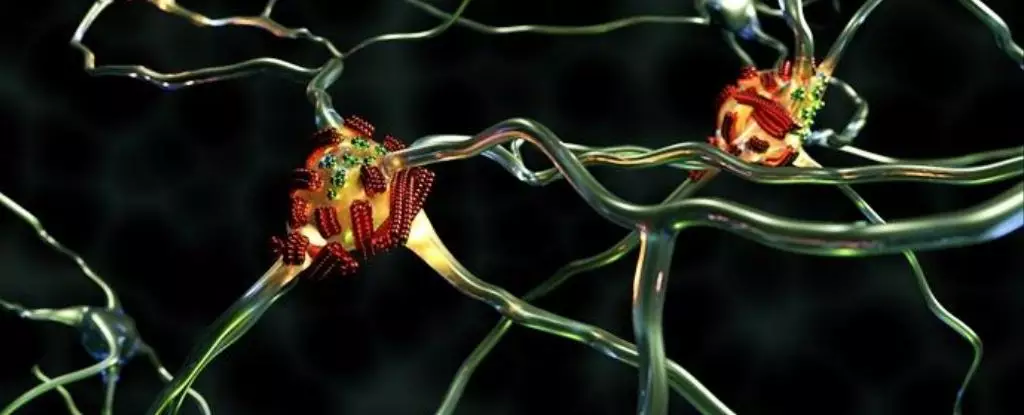Recent advancements in imaging technology have catalyzed a significant breakthrough in our understanding of Alzheimer’s disease, particularly regarding the proteins linked to its progression. A newly published study, spearheaded by molecular physicist Peter Nirmalraj and his team, has identified a unique subset of amyloid beta proteins that display rapid propagation abilities, termed ‘superspreaders.’ This discovery sheds light on the mechanisms that may underlie the aggregation of amyloid beta plaques, which are widely observed in the brains of individuals afflicted with Alzheimer’s. The findings not only deepen our comprehension of protein dynamics within the affected neural environments but also open avenues for exploring novel therapeutic strategies against this devastating disease.
Despite a wealth of research, the exact relationship between amyloid beta plaques and Alzheimer’s pathology remains a contentious topic in scientific discourse. The longstanding debate centers around whether these protein clumps are causative factors in the disease or mere artifacts of neurodegeneration. Previous laboratory studies have not established a direct correlation between amyloid beta proteins and neuronal damage, suggesting that their role may be more complex. While new findings indicate that amyloid beta plaques might not be the primary agents of neuronal damage, they might coexist with other molecular entities that contribute to neurodegenerative processes. This highlights the critical need for ongoing investigations into the interactions and interactions between amyloid beta proteins and other molecular players within the brain.
Nirmalraj’s research team, collaborating with colleagues from the University of Limerick, employed a cutting-edge atomic force microscope to observe the nuanced behavior of amyloid beta proteins. By immersing the proteins in a saline solution that mimics the brain’s natural environment, the researchers collected data over an extensive period of 250 hours, granting them unprecedented insight into the proteins’ aggregation habits. Unlike conventional staining methods that may distort protein structures, this innovative approach preserved the proteins’ natural configurations, facilitating a more accurate assessment of their dynamics.
Through meticulous observation, the researchers discovered that a distinct variant of amyloid beta proteins exhibited higher surface reactivity, delineating them as superspreaders. These proteins, identified specifically as amyloid beta 42, were found to emerge only after an initial fibril had formed—a critical insight that challenges existing paradigms concerning amyloid beta’ protein evolution. The research not only delineates the structural variations among amyloid beta proteins but also raises intriguing questions about the chemical properties driving these secondary structures’ proliferation.
The correlation between the aggregation of amyloid beta proteins and the manifestation of Alzheimer’s symptoms, such as memory impairment and behavioral alterations, has been historically established through observational studies. However, discerning the precise mechanisms underpinning the neurotoxic effects in dementia remains an intricate puzzle. As neurodegeneration unfolds, various physiological changes cascade over decades, compounding the complexities gracing the understanding of Alzheimer’s.
Consequently, researchers are encouraged to consider alternative theories, such as the notion of Alzheimer’s acting as an autoimmune disorder, further enriching the discourse on potential treatment pathways. The identification of superspreading amyloid beta proteins may lay the groundwork for not just targeted therapies but also for preventive measures that can mitigate the impacts of this insidious disease.
The investigation into protein superspreaders presents an exciting frontier in Alzheimer’s research, bridging gaps in knowledge regarding protein dynamics within the brain. While this study offers valuable insights, it also accentuates the importance of interdisciplinary approaches in neuroscience, combining molecular biology, biochemistry, and neuropsychology to fully grasp the intricacies of Alzheimer’s disease. Future research will undoubtedly delve deeper into the mechanistic understanding of amyloid beta dynamics, presenting opportunities for intervention and enhancing therapeutic avenues that could alleviate the burden of Alzheimer’s and improve the quality of life for millions impacted by this condition.

